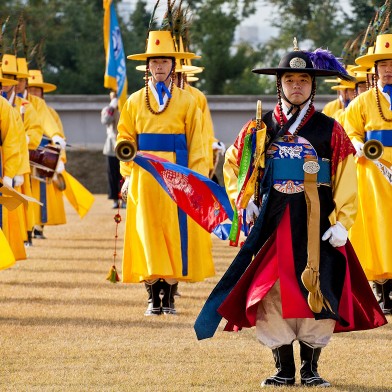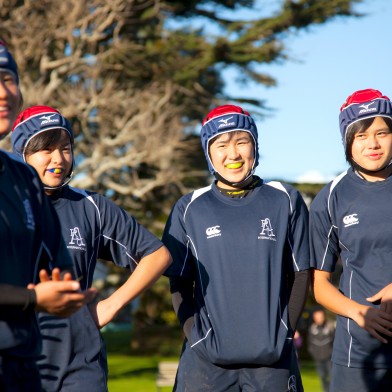The boundaries between Oceania and Asia have never been so blurred in the sporting world – opening up new opportunities for New Zealand, writes Koji Kobayashi.
OPINION: The 2018 Asian Games, also known as Asiad, was held in Jakarta and Palembang, Indonesia. While the event is less known outside of Asia, the Asian Games is the second-largest multi-sport event only after the Olympics. Recently, Australia has shown its intention to join the Asian Games. The boundaries between Asia and Oceania have never been so blurred in the eyes of the sporting world. It is therefore timely to reflect on the strategic location of New Zealand within the geopolitics of sports in Oceania and beyond.
Brief history of the Asian Games
During the 1948 London Olympics, an Indian IOC (International Olympic Committee) member, Guru Dutt Sondhi, proposed an idea of holding pan-Asian multi-sport events to the delegates from other Asian nations.
This idea was then turned into reality with the formation of the Asian Games Federation (now the Olympic Council of Asia) and the eventual hosting of the first Asian Games in 1951 in New Delhi, India. Since then, the Asian Games have been held every four years in between the Summer Olympics. In addition, the Asian Winter Games was added in 1986 and has been held on a nearly four-year cycle.
Despite its lower profile, the Asian Games is no less political than the Olympics. In particular, the inclusion and exclusion of nations have proven to be a highly contentious geopolitical exercise. For example, the People’s Republic of China (PRC) was excluded from 1954 to 1970 due to the existence of ‘two Chinas’ (PRC and the Republic of China, now known as Taiwan). The PRC was eventually welcomed to the Asiad in Tehran in 1974 largely because of the PRC’s close relationship with host nation Iran. Taiwan was then expelled from the AGF until it was re-admitted in 1990 as ‘Chinese Taipei’.
The Asian Games still serves as an important political site today with Australia’s attempts to move into the Olympic Council of Asia (OCA).
“New Zealand could consider using the Asian Winter Games as a springboard to host the first-ever Winter Olympics in the Southern Hemisphere.”
—
Australia’s attempts to move into the Asian Games
Australia’s move into the Asian sporting landscape was symbolically prompted by the Football Federation Australia moving away from the Oceania Football Confederation and becoming a member of the Asian Football Confederation in 2006.
The move enabled Australia to qualify for the FIFA World Cup through Asia, rather than being required to play an extra inter-continental playoff series.
In 2007, following the lead of football, the Australian Olympic Committee proposed to join the Asian Games with an aim to increase a level of competitions in some sports such as swimming, gymnastics and badminton. However, the proposal was rejected by the OCA on the grounds that the inclusion of Australia was unfair to other Oceanian nations.
Despite the rejection, Australia continued its effort and was able to send 30 athletes as ‘guests’ to the Asian Winter Games in 2017. It has also been announced that the OCA would allow a small portion of Oceanian athletes to participate in the 2022 Asian Games, provided the sporting codes intend to qualify for the 2024 Olympics through Asia. As academic Peter Horton (2013) argues: “Australia’s potential direct engagement ‘with’ and specifically ‘from within’ Asia represents a litmus test as to whether Australia will function globally as an ‘Asian’ nation or as a ‘Western’ nation in the Asia Pacific region”.
An opportunity for New Zealand
For New Zealand, the Asian Games have been largely overlooked, perhaps partially due to the significance of the Commonwealth Games held in the same year.
However, it does not mean that a country is restricted to participate in only one of these two events. Singapore, Malaysia and India, for instance, have participated in both.
New Zealand’s participation in the Asiad would be particularly appealing for the Olympic sports that are not currently present in the Commonwealth Games, including football, judo, taekwondo and volleyball.
Along with Australia, New Zealand sent three athletes to the 2017 Asian Winter Games, while winter Olympic sports may offer a opportunity for future involvement. New Zealand could consider using the Asian Winter Games as a springboard to host the first-ever Winter Olympics in the Southern Hemisphere. Potential opportunities may be only limited by our imagination.
Most importantly, what is at stake in a larger picture is the struggles of Oceania for its viability and legitimacy as a part of the IOC structure.
The Oceania National Olympic Committee is the smallest of all five continental associations with 17 nations whereas the next smallest association, Pan American Sports Organisation, has 41 nations. What’s more, Australia and New Zealand have dominated a number of sports in Oceania to a great extent.
With Australia moving closer to Asia, the viability of Oceania is threatened. Against this backdrop, 18 nations from Oceania (including Australia but excluding New Zealand) participated in the 2017 Asian Indoor and Martial Arts Games, which was also organised by the OCA. Is Oceania gradually becoming a part of Asia in the sporting landscape?
Rather than limiting ourselves to the discussion of either ‘Asia or Oceania’, wider thinking may be required to re-imagine the best possible continental structure for the Asia and Pacific region.
One idea proposed by a football journalist is to split the region into two continental associations – one consisting of West and Central Asia and another consisting of East Asia and Oceania.
While this may or may not be a feasible option for the IOC, what’s clear is that sports and sport organisations are positioned at the forefront of this re-imagination of continental boundaries and solidarity.
Koji Kobayashi is a lecturer at the Department of Tourism, Sport and Society in the Faculty of Environment, Society and Design at Lincoln University.
– Asia Media Centre


